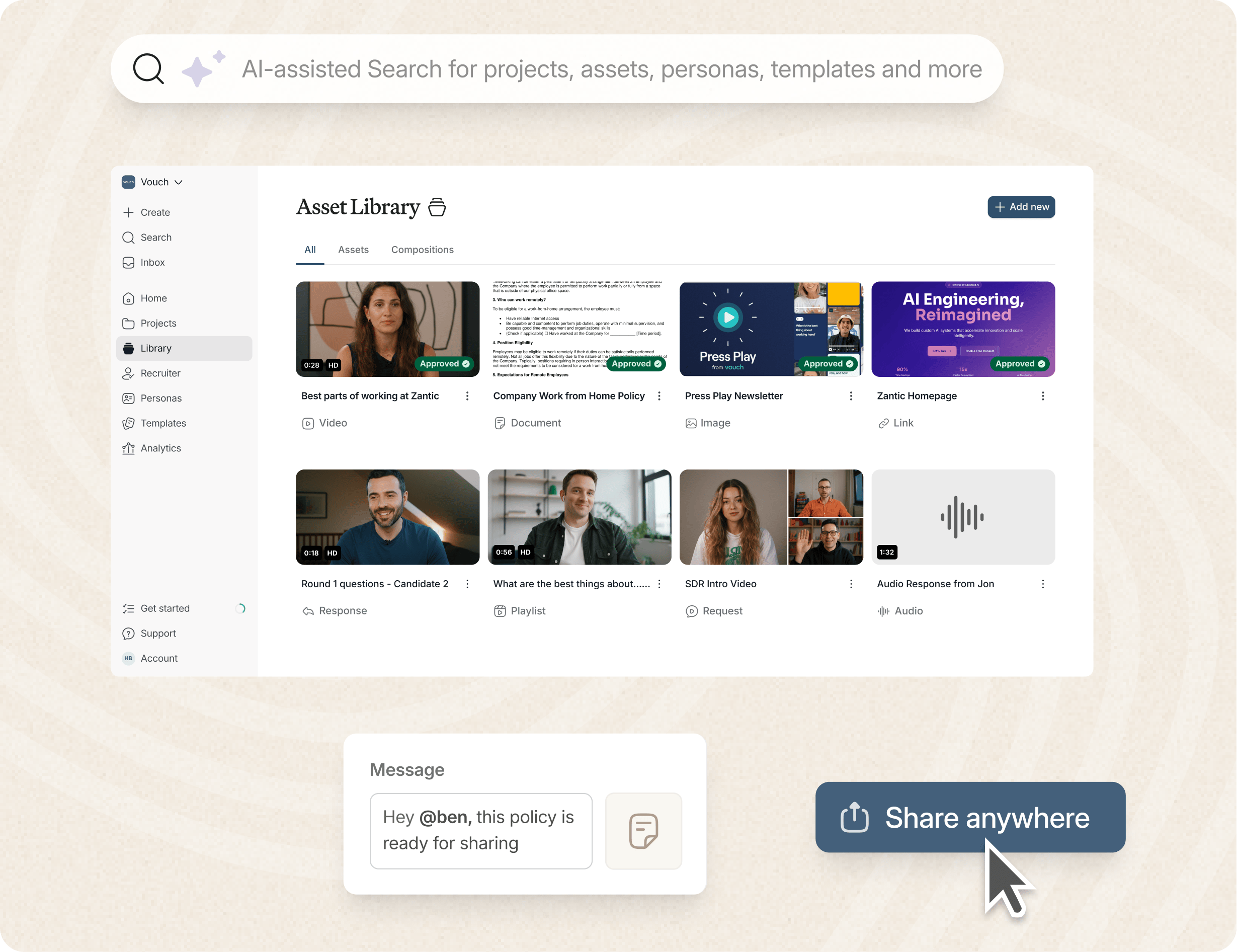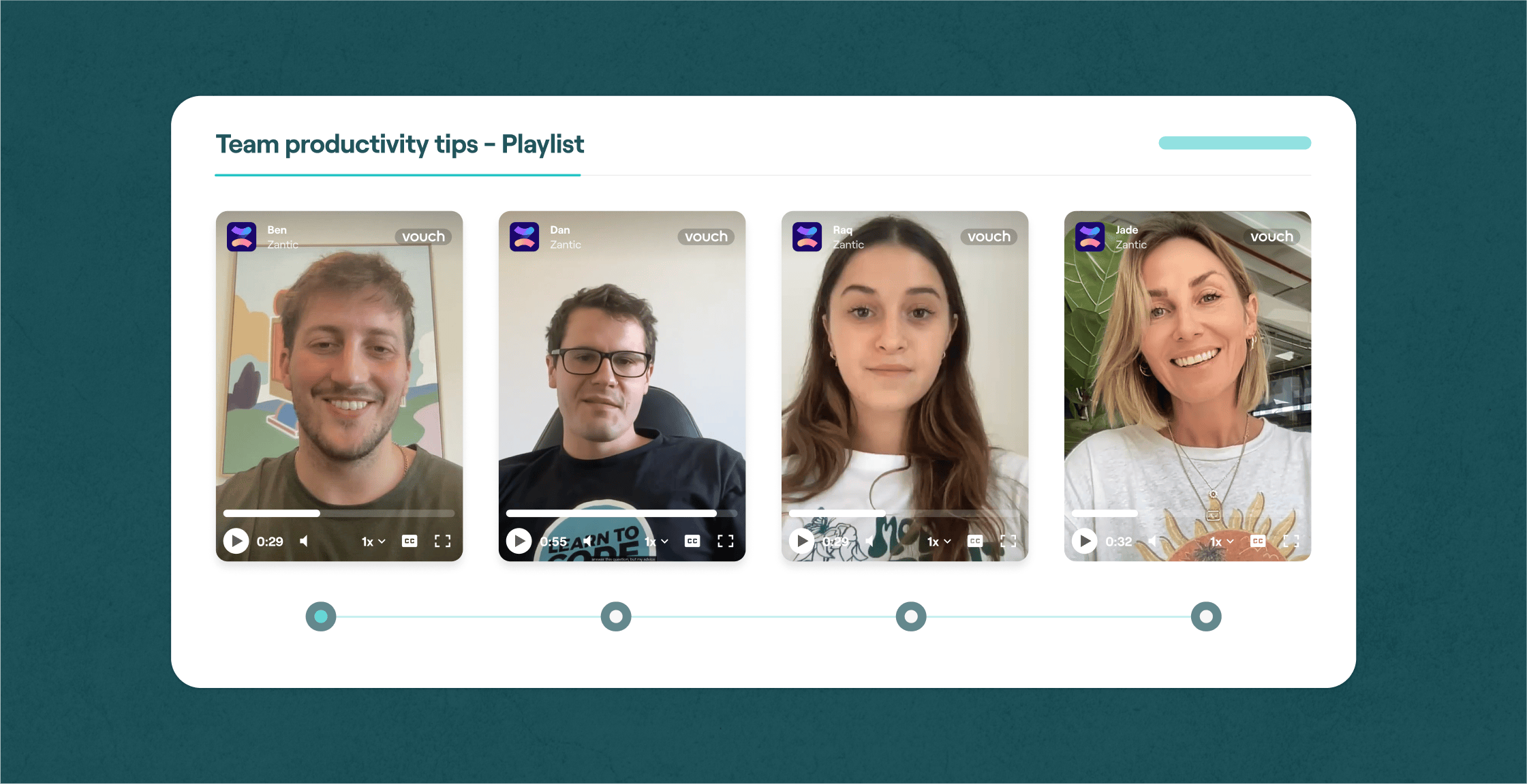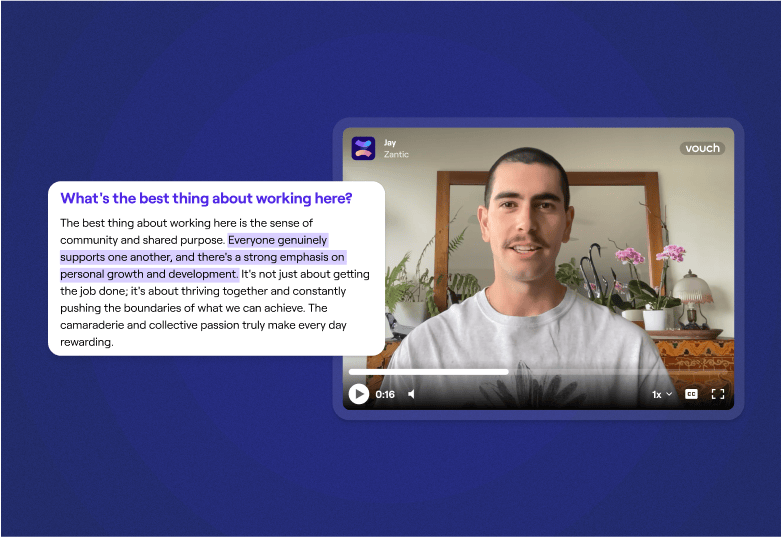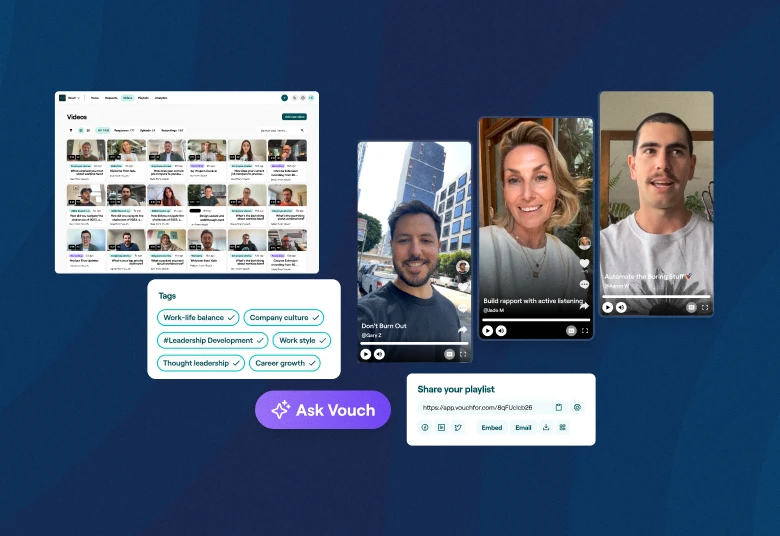In 2026, Microlearning is the key to breaking down information into small, manageable pieces -perfect for today's fast-paced work environment.
It helps employees learn faster and retain their training by using short videos, screencasts, games in apps, and interactive educational strategies.
With tools like infographics and quick reference guides, microlearning targets the specific areas you need to focus on while removing the noise.
Microlearning has lots of benefits too: people pay more attention, remember more, find learning more enjoyable, and it's super flexible.
In addition to these benefits, microlearning doesn't cost much to set up compared to other training methods.
So, let's dive into microlearning!
Why Does Your Company Need A Microlearning Strategy?
For every business today, it's important for employees to keep learning and growing if you want to stay ahead.
However, in recent times, keeping attention has become tougher due to our shrinking attention span. That's where microlearning helps; it breaks down learning into small, easy-to-digest pieces.
With microlearning content, each bit is designed with a clear goal in mind, like engaging videos, eye-catching infographics, fun quizzes, or even simulations that make learning interactive for those with short attention spans. Since everything's made for mobile use, your employees can learn whenever they want, wherever suits you best.
By providing content in smaller pieces, microlearning helps overcome the forgetting curve, one of traditional education's major drawbacks.
Another benefit for companies is the use of LMS and video tools. Creating these bite-sized lessons instead of old-school methods can save your organization a lot of money, such as not needing an in-person trainer, hiring venues, or blocking out loads of employee time.
When we look at what is microlearning, the benefits are immense.
The AI-enabled workspace for talent teams.
- Unified workspace for talent teams
- Accelerate hiring with AI tools
- Auto-generate polished hiring and employer brand content
- Easily repurpose assets across all channel

What Is Microlearning, The 7 Major Benefits
Benefits include better retention, faster course development time, and greater cost-effectiveness. The biggest benefit is that you can better educate your employees so they can apply this learning to their work.
Let's jump into the 7 major benefits:
1. Microlearning Is Faster To Create
Microlearning offers a bunch of big benefits for corporate training.
For starters, it's faster to create than put together than old-school lengthy training. You can develop courses that are smaller components pretty quickly, making it a favorite among learning and development professionals. This also helps you get new programs up and running.
Microlearning is a speedy way to get effective training out there - and you can even create your in-house training videos with tools like Vouch to make internal knowledge sharing a breeze.
2. Microlearning Is More Affordable
Another perk of microlearning is how cost-effective it is.
With microlearning modules being short, there's less need for a bunch of resources like instructors, places to learn, or materials you have to manage with due diligence. On top of that, since microlearning is designed to be undertaken online, you don't have to worry about the expenses of physical learning or materials.
Additionally, with the collaborative learning approach, subject matter experts within your company can become course authors, creating mini-courses on topics they are knowledgeable about. This not only saves on costs but also ensures that the content is relevant and up-to-date.
3. Microlearning Is Highly Flexible
With microlearning, your employees can use their smartphones or tablets to learn on the move, on coffee breaks, or even on the couch at home—whenever they find it convenient.
This kind of flexibility really comes in handy for people who have packed calendars or those working from different locations. They can fit their microlearning into their busy schedules and, importantly, go at their own pace, being able to go back over the material as often as needed.
4. Microlearning Boosts Knowledge Retention
When we look at what microlearning is, one of the biggest benefits is boosting knowledge retention - as it simplifies tough topics into small, digestible information that our brains can handle, fighting the forgetting curve.
By using methods like repeating information, adding surveys, quizzes, and gaming elements, you can use microlearning to strengthen important facts and improve long-term memory through repetition. Microlearning is vital for companies that need their employees to remember crucial information.
5. Microlearning Is Far More Engaging
Getting your employees engaged is often the biggest hurdle for learning, and that's where microlearning shines.
With microlearning, you can provide all sorts of immersive media like videos, quizzes, and even games, that don't feel like learning at all; they often feel like fun, and social media can be leveraged to make it even more engaging. This has been the secret behind language courses for decades. It's this mix that keeps employees interested and eager to learn more as they go.
6. Microlearning Provides Learning Freedom
Microlearning gives your employees the chance to learn in a way that best suits them.
With this approach, your employees can pick what they want to learn based on what's important for their job or personal growth goals. They get to decide "when and where" they dive into these bite-sized lessons, which means learning happens right when it's needed most.
Microlearning should be designed to fit into the flow of your employee's life and work without interrupting their critical tasks and commitments. This approach allows for more freedom and flexibility in learning, as each module focuses on one specific skill or knowledge gap topic.
7. Microlearning Is Easier To Track
When we look at what is microlearning, we need to touch on the analytics and metrics side, as it makes it easier to track the impact of your education.
Through a learning management system, such as an LMS platform, for example, you can see when everyone has finished their training modules or use analytics to deep dive into how engaged learners are, how much progress they've made, and how well they're performing overall. On top of that, you can easily survey your employees to see how they find their microlearning.
What Are The Limits Of Microlearning?
Microlearning has a lot of benefits, but it's not designed for every educational need. For starters, when you're dealing with complex topics that need a lot of detail and understanding, microlearning might not cut it.
Because these bite-sized lessons are short and to the point, they aren't always the best fit for things like certifications or formal education, where you really need to dive deep into the material and be tested thoroughly on what you know.
In situations like these, sticking with more traditional learning methods is probably your best bet. So, before implementing microlearning strategies and a training program, be sure to do a full analysis of what learning strategies will work best.
What Are The 5 Microlearning Best Practices?
To make microlearning effective, follow these five best practices:
- Set one goal per module for easy learning.
- Keep modules short, around 2 to 5 minutes.
- Use various methods like videos and quizzes.
- Include interactive elements like quizzes or polls.
- Space sessions with breaks for better retention.
Following these tips in microlearning helps organizations engage their audience and enhance knowledge retention.
1. Ask Your Employee About Their Learning Needs
Before you start to implement microlearning for your team, identify what they need to learn.
When we look at what microlearning is, we need to analyze different job roles to pinpoint crucial abilities for each and then customize the microlearning material to suit various departments' needs.
In other words, one size may not fit all, so be sure to do a thorough analysis first.
2. Cut Out All Of The Noise
Microlearning is great because it eliminates unnecessary noise and focuses on what your employees need to know.
While keeping material short and sweet sounds easy in theory, it can often be really challenging for educators who have a wealth of knowledge. The trick to make sure your microlearning content hits the mark is to start by figuring out the main "dot points" that people need to learn. Then, cut out anything that doesn't fit those key points. By breaking down big ideas into small pieces or nuggets of information, learning becomes easier to handle and a lot less overwhelming.
3. Use Video For Information Retention
Using video tools like Vouch in short learning sessions really helps people remember the material. This Forbes article found that viewers retain 95% of a message when they watch it in a video, compared to 10% when reading it in text.
When we watch a video, it grabs our attention, and we don't feel like we're working - more like relaxing, which is ideal for microlearning.
So when we look at what microlearning is, videos are great for showing how to do something step-by-step or giving real-life examples; keeping learners hooked means they're likely to keep more of what they learn.
But here's the trick: you need to keep your videos short and sweet - think minutes, not hours! That way, everyone can watch them without zoning out.
And if there's a lot to cover, just split it into smaller parts so anyone can jump back in later on specific bits they want to brush up on.
Vouch video has a neat AI editing feature to help you with this!
4. Try To Implement Gamification Techniques
Turning learning into a game is a great way to get people more involved and eager to learn, especially when it comes to bite-sized education. When you add elements of gaming into the mix, training becomes not just interactive but also fun.
For starters, using gamified apps to bring new employees onboarding has been proven to have great results. Some apps make learning an exciting adventure, not a boring task, using shorter quizzes and challenges during these training and onboarding sessions.
For more information on gamification, please see this article: Workplace Gamification: A Simple Guide For HR Teams
5. Use Microlearning-Assessments
Microlearning assessments are a powerful tool for gauging employee knowledge retention and understanding.
By incorporating assessments into microlearning modules, you can effectively measure the impact of the training. These assessments can take various forms, such as quizzes, simulations, or interactive activities, ensuring active participation and reinforcing key points.
Immediate feedback from assessments not only engages learners but also helps identify knowledge gaps for targeted reinforcement. Additionally, microlearning assessments provide data-driven insights so you can improve your future learning experiences.
What are 7 key statistics on micro-learning?
While Microlearning itself is a simple concept, it can be applied to almost any field or industry with numerous benefits.
Here are seven of the major statistics on micro learning:
- According to research by Dresden University of Technology, microlearning improves focus and supports long-term retention by up to 80% compared to traditional learning methods.
- The Journal of Applied Psychology found that microlearning creates 50% more engagement than traditional eLearning approaches.
- Deloitte's research indicates employees typically spend only 1% of their workweek (approximately 24 minutes) on formal learning.
- LinkedIn's Workplace Learning Report found that 58% of employees would be more likely to use their company's learning tools if the content was broken into shorter lessons.
- Software Advice's industry survey reported that companies using microlearning see an 18% increase in employee engagement and 23% increase in information retention.
- RPS Research found that microlearning can reduce development costs by 50% and increase the speed of development by 300% compared to traditional courses.
- According to the Journal of Educational Technology Development and Exchange, learners answer questions 28% more accurately when using microlearning compared to traditional learning methods.
If you would like to learn more about microlearning, please just get in touch with the Vouch team or book a demo here!
FAQs
What is microlearning?
Microlearning is all about breaking down the learning material into small chunks or short bursts. This way, it zeroes in on a particular skill or learning objective, making it easier for people to learn something specific and useful quickly.
Why is microlearning needed today?
In today's fast-paced world, the workforce needs to keep up with constantly changing technology. This is where microlearning comes into play. It offers a way of learning that fits perfectly with the modern demand for continuous education.
Unlike old-school training methods that don't really cut it anymore, microlearning makes learning available at the point of need. It seamlessly integrates into the regular flow of work activities, supporting a culture of learning and increasing overall productivity.
What is the main benefit of microlearning?
When we consider microlearning, one of its biggest perks is that it helps you retain what you learn, gets learners more involved, and makes everything more efficient. With information broken down into small parts, folks find it easier to pay attention, remember things better, and use what they've learned in their everyday jobs, especially when it comes to relevant information.
What are microlearning best practices?
When it comes to microlearning, there are some best practices you should follow. First off, concentrate on just one learning objective at a time. It's also important to keep your content brief but mix things up a bit so it doesn't get boring. Making the lessons interactive can really help people stay engaged. By spacing out when you learn stuff instead of cramming everything in all at once, you'll likely remember more too.
Also, since lots of us use our phones for pretty much everything, making sure your microlearning fits well on your employee's mobile devices is key. Lastly, finding the right balance between how long each lesson is, how often they happen, and how you deliver them will make your microlearning experience top-notch.
Is microlearning just a trend or here to stay?
When we look at what microlearning is, we look at the future of learning. Microlearning isn't going anywhere; it's the way forward in learning, fitting right in with sustainable development goals, and keeping up with new trends in education. Because it's so good at providing focused and interesting lessons, it plays a crucial role in today's training methods.
How long does it take to create a microlearning module?
Creating a microlearning module can vary in time, depending on things like how complex the content is, what kind of format you're using, and what resources you have at hand. On average, it might take just a few hours or stretch out to several weeks to put together a microlearning module.
What is the optimal length for a microlearning module?
When we look at what a microlearning module is, the sweet spot for its length is usually from 2 to 10 minutes. This duration helps learners concentrate better and remember what they've learned without getting too much on their plate.
By dividing the material into smaller "chunks or nuggest", you can make sure that people stay engaged and can keep their attention span high throughout the learning process. However, the ideal duration for a microlearning module may vary depending on the complexity of the topic and learner preferences. It is important to aim for focused content that can be easily digested in a single sitting for optimal learning.
When should you not use microlearning?
Microlearning is a handy and flexible way to learn, but it's important to remember that it has its downsides. For starters, when we're dealing with complex topics that need a lot of detail, microlearning might not be the best fit. On top of this, things like compliance training, where you have to cover a lot of ground thoroughly, may not do the trick.
What is contextual microlearning?
When we look at what is microlearning, contextual microlearning is all about giving you small bits of learning that really matter in the real world, especially with things like job aids. It's super handy because it lets you find and use information right when you need it, making sure you can put what you've learned to work straight away in your job.
Ready To Implement Microlearning In Your Organization?
Microlearning is a game-changer for learning and development. It's all about giving employees the power to keep on learning, pick up new skills, and improve their confidence so they can better help your company grow.
When we look at what microlearning is, both employees and your company benefit. To summarize, here are the main reasons microlearning is so effective:
- Continuous learning: Microlearning makes it easy for people to always be learning by offering quick access to important training. People can learn in short bursts whenever they find time, especially with Video, making it perfect for those with packed schedules.
- Acquisition of new skills: With microlearning, picking up new skills can happen gradually. Complex subjects are broken down into smaller parts so that everyone can understand them better and use them right away in their jobs.
- Personalized learning experience: Microlearning lets employees choose what they want to learn based on what they need most. This means everyone gets exactly what works best for them.
- Flexibility and accessibility: Employees can dive into microlearning modules anytime they like, from anywhere, using any device your employees have.
- Engagement and motivation: Microlearning is designed to keep your employee's attention through videos, quizzes, and gamification.
Vouch Is Made For Microlearning!
Loved by companies like Canva, Nike, Cisco, HubSpot, Amazon, and more, tools like Vouch make leveraging video in your business remarkably easy.
Be sure to book a Vouch demo today and chat with a video content expert.
You might also like

Elevate Your Brand Today With Vouch
Discover how Vouch can accelerate talent acquisition while helping you stay on-brand.






